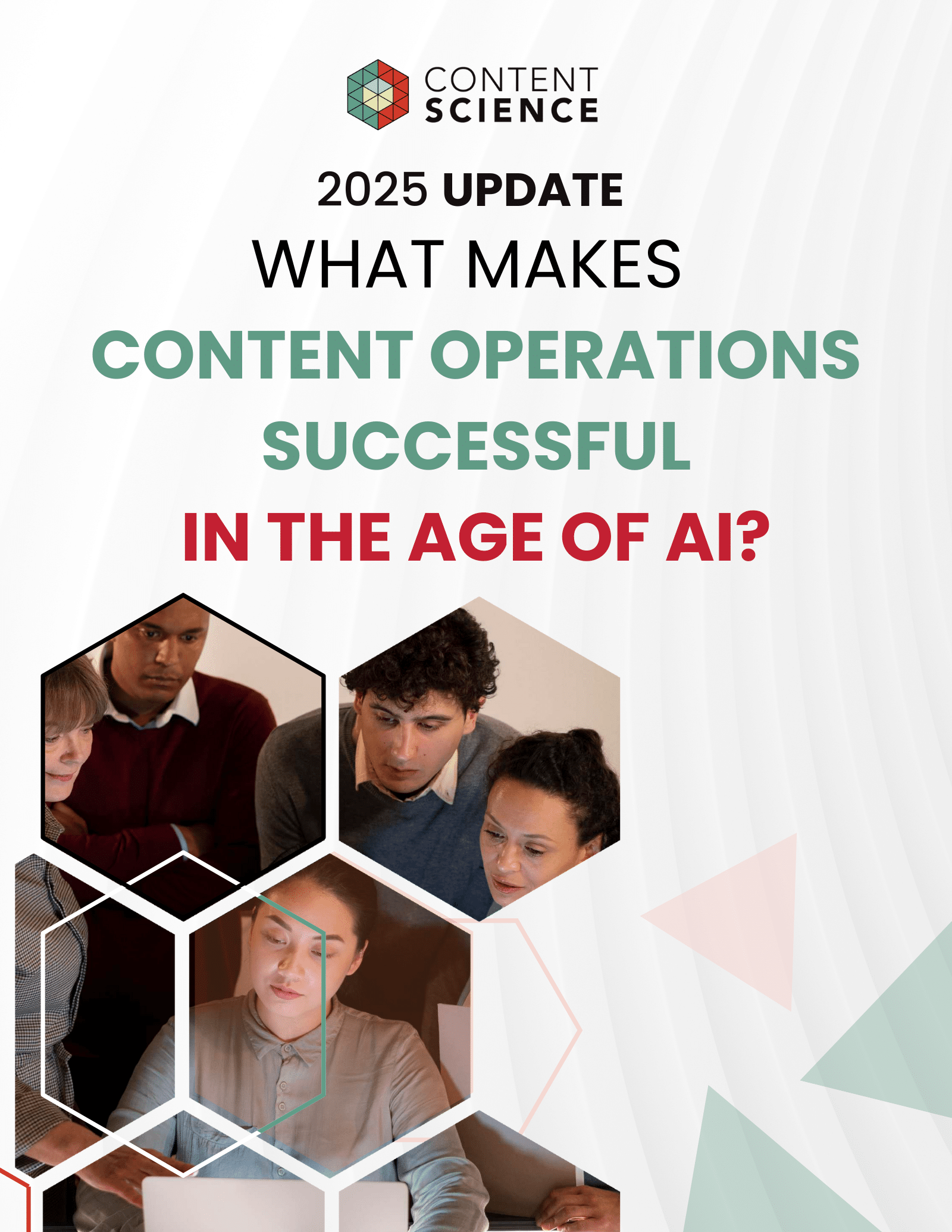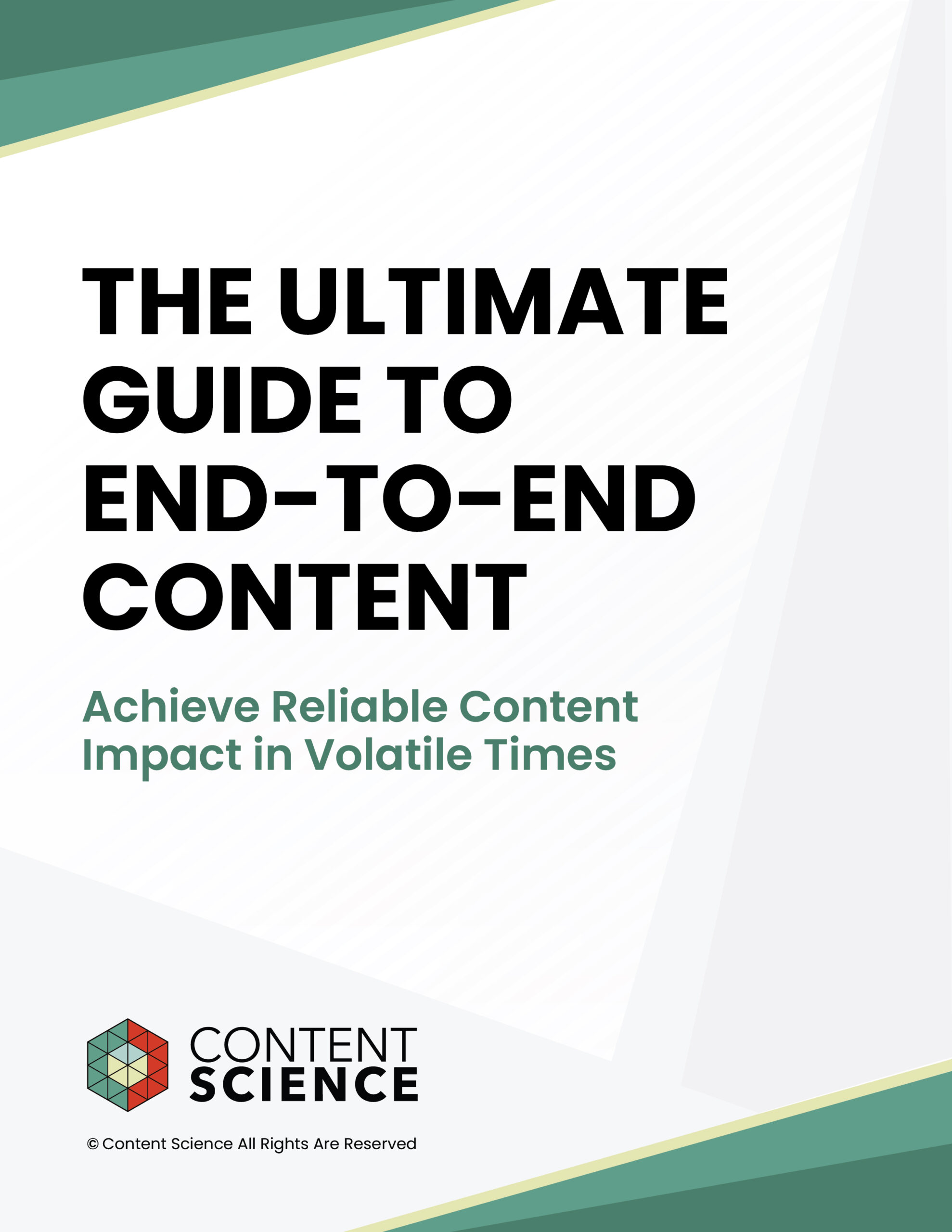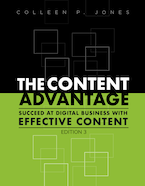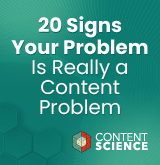
Big expectations from AI (artificial intelligence). Intense competition on customer experience. More misinformation than ever. Oh my! The content situation this year is complex. To help you make sense of it, we’ve conducted thorough research and gathered an extensive list of salient content facts.
The Content Science team updates our interactive infographic of our 50 Crucial Content Facts every year with statistics from our own studies as well as studies by top institutions and research firms. We also include quotes from diverse experts and leaders.
This year, these content facts fall into five categories:
- Content Consumption
- Content Operations + Systems
- Content Intelligence, Effectiveness, + ROI
- Content Channels
- Artificial Intellignce + Digital Transformation
This article offers a higlights from this year’s updated list and some commentary.
Content Facts
Content Consumption
93% of American adults now use the internet, with 32% reporting they are online “almost constantly.” This increase in online time goes hand-in-hand with the increase in mobile content consumption, with smartphones accounting for the majority of online video consumption and 60% of all web traffic.
Mis and disinformation continue to spread like a virus online and undermine trust. A recent Reuters Institute study found 59% of people around the world express concern about what is real and what is fake on the internet when it comes to news. And 52% of Americans are uncomfortable with news produced by AI with only some human oversight.
Use of social media continues to grow. Now 5.22 billion people have at least one social media account, and 90% of American teens report using YouTube, with 73% saying they use it daily.
At the same time, traditional methods of digital communication are going strong. The Radicati Group forecasts the number of business and consumer emails sent and received per day to reach 424 billion by the end of 2028.
Content Operations + Systems
Artificial intelligence and new marketing technologies are changing the way organizations approach content. 92% of professionals in complex organizations report using artificial intelligence in their content operations.
Despite the benefits of AI, many organizations struggle to achieve their goals because of a lack of content operations maturity. In our most recent Content Operations Study, Content Science found that far fewer organizations were operating at levels 4 and 5 (Sustaining and Thriving).
For large or complex organizations, two of the top challenges to maturing content operations are highly complicated workflows and unclear or undocumented workflows.
And applying systems thinking to content is on the upswing. As Colleen Jones puts it in The Content Advantage:
An end-to-end content approach ideally factors in all content and contexts at an organization. If that sounds like a lot to cover, it is. But I find an organization can cover most content and many contexts with these three systems: Content experience, content lifecycle, and content intelligence.
Content Intelligence, Effectiveness, + ROI
The pressure to deliver excellent customer experience is higher than ever. A whopping 80% of companies across industries say they expect to compete primarily on customer experience.
So it’s no wonder that teams who measure how effective their content is with customers are progressing. 100% of organizations that report high levels of content success also report measuring content effectiveness or having a system of content intelligence.
While excitement about AI continues, proving its ROI is critical to moving forward. The primary obstacle to AI adoption, as reported by 49% of recent Gartner survey participants, is the difficulty in estimating and demonstrating the value of AI projects.
And misinformation is not simply a political or news problem. It’s a problem for brands, too. Adweek recently reported that 75% of consumers feel less favorable toward brands advertising on sites / platforms with misinformation.
Laura Barnes, Senior Director of Global Marketing at Red Hat, explains that content intelligence, including data and user / customer research, helps everyone involved in content get the right focus:
Set goals for your content, measure it, refine it, and repeat. That’s the way to get your team focused and to prove its value to the rest of the business.
Content Channels
The pressure to compete on customer experience means pressure on content channels to perform. Social media influencers can make a big impact on shopping. Nearly half of all consumers make daily, weekly, or monthly purchases because of influencer posts, with 30% trusting influencers more today than they did just six months ago.
At the same time, content channels are experiencing extreme disruption, which introduces challenges to anyone trying to deliver or promote content on them.
For instance, privacy legislation and signal loss have had a material impact on media planning and buying. The Interactive Advertising Bureau found almost 90% of ad buyers say their personalization strategies, ad investment costs, and mix of data across first-, second-, and third-party sources are being redesigned.
As another example, search is being disrupted in two ways. One is trying to filter a proliferation of misinformation and low-quality content generated by AI. Two is facing new competition from AI tools themselves, such as Perplexity. As Terminal CPO Greg Vilines explains it in our 2025 Content Predictions and Plans:
In 2025, AI is going to significantly influence content as an acquisition channel through organic search. Google has integrated AI results directly into its search. ChatGPT surpassed 300 million weekly users in December of 2024, and more and more users are thinking of AI tools as their default answer engine.
Artificial Intelligence + Digital Transformation
The pressure to compete on customer experience and the rise of artificial intelligence are accelerating change in many organizations. 40% of revenue for the Global 2000 will come from digital products, services, and experiences by 2026.
And nearly all of the respondents (91%) to our recent survey confirmed that they recently were or currently are involved in a digital transformation or modernization effort.
As enterprises get more serious about deploying AI at scale, they have more concerns. In the manufacturing industry, for instance, security worries have tripled, accuracy concerns have grown fivefold, and transparency issues have quadrupled since 2023.
Visit 50 Crucial Content Facts to get all 50 content statistics, facts, and quotes. And subscribe to Content Science Review for access to premium content such as research reports, webinar recordings, templates, and guides.
Events, Resources, + More
New Data: Content Ops + AI
Get the latest report from the world's largest study of content operations. Benchmarks, success factors, commentary, + more!
The Ultimate Guide to End-to-End Content
Discover why + how an end-to-end approach is critical in the age of AI with this comprehensive white paper.
The Content Advantage Book
The much-anticipated third edition of the highly rated book by Colleen Jones is available at book retailers worldwide. Learn more!
20 Signs of a Content Problem in a High-Stakes Initiative
Use this white paper to diagnose the problem so you can achieve the right solution faster.






Comments
We invite you to share your perspective in a constructive way. To comment, please sign in or register. Our moderating team will review all comments and may edit them for clarity. Our team also may delete comments that are off-topic or disrespectful. All postings become the property of
Content Science Review.